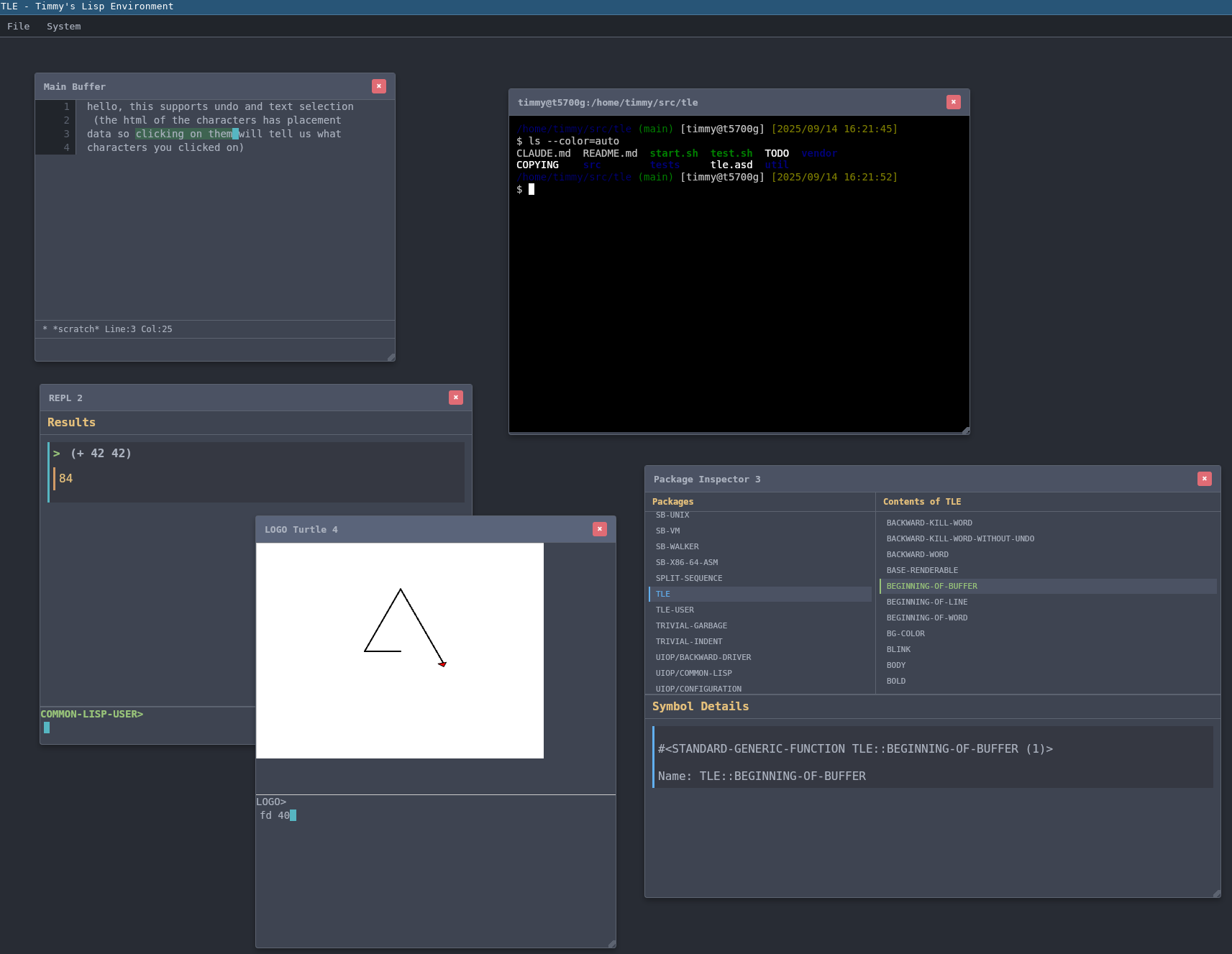I wrote a blog post a little over two years ago about another text editor I started writing in common lisp. In typical fashion, I lost interest around the time I got the basic stuff working. At the time it was something simple–just printing lines on a SDL2 canvas.
In somewhat related news, the main developer working on Lem announced he was thinking about the deprecation of the SDL2 frontend for Lem in favor of using a webview frontend. The webview frontend idea is basically a minimal web browser (WebKitGTK) connecting to a web server (the lisp part). Some people found this off putting…I’m not sure if you’d call them traditionalists? I think there is the thought that you can’t have lisp all the way down if half of the app is a C++ web browser.
After playing with webview some, I think this is likely the best future for lisp GUI applications. On the github issue thread, cxxxr basically lays the landscape from the research he did and I think it’s pretty clear that unless you want to build your own UI toolkit, you the modern web browser has solved so many problems that it makes the most sense for most people. That’s probably why so many modern UI apps are running on a web-based UI. From a common lisp point of view, this is convenient because there isn’t much you have to do dependency wise–a web server is pretty easy and the webview is like a library with 4-5 functions in it.
So, being inspired by this, I revived this old text editor I started by basically deleting all the existing code, and then vibe coding a web server to display windows and sort of a mini UI toolkit. Using that, I created a couple of different types of windows: a REPL, a LOGO-like program, a terminal, a text editor, and a package inspector. Later on, I added webview support. It’s all really toy-ish, and sort of reminds me of Squeak, my old happy place for programming.
Link to git repo. Screenshot:

Watching Claude code implement things like undo was entertaining to
watch. It often struggled with matching parenthesis, but was sometimes
able to work itself out of the hole by using the instructions in
Claude.md to run the paren-checker (that it wrote itself) on the
source file. I think this is probably a project I wouldn’t have come
back to without the help of an AI agent, and being able to knock this
out in about a month’s time after work and on the weekend left me
pretty impressed with the future for AI agent coding.